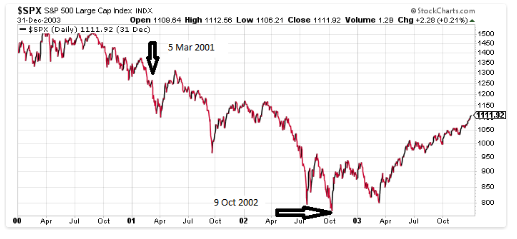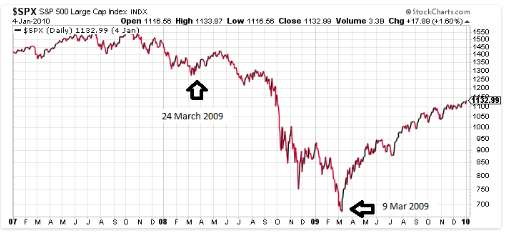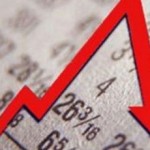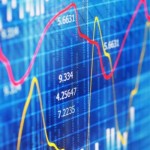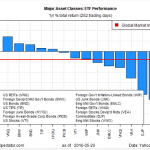Is Recession-Risk Monitoring Useful For Investing?

 There’s a myth going around that tracking the business cycle is a waste of time for investors. On the surface, the reasoning sounds logical. By the time it’s clear that the US has slipped into a recession, it’s too late to tone down equity positions because Mr. Market has already incorporated this information into prices. But the historical record offers a different story–and a different lesson, namely: carefully monitoring recession risk can be helpful for sidestepping the worst of a stock market correction that unfolds because of economic contraction. Skeptical? Of course you are, and rightly so. In the tortured realm of the macro-markets nexus, we’re up to our eyeballs in conflicting and misleading commentary and analysis. But let’s cut through the noise and allow the numbers to tell the story.
There’s a myth going around that tracking the business cycle is a waste of time for investors. On the surface, the reasoning sounds logical. By the time it’s clear that the US has slipped into a recession, it’s too late to tone down equity positions because Mr. Market has already incorporated this information into prices. But the historical record offers a different story–and a different lesson, namely: carefully monitoring recession risk can be helpful for sidestepping the worst of a stock market correction that unfolds because of economic contraction. Skeptical? Of course you are, and rightly so. In the tortured realm of the macro-markets nexus, we’re up to our eyeballs in conflicting and misleading commentary and analysis. But let’s cut through the noise and allow the numbers to tell the story.
Consider how the S&P 500 fared in the last two NBER-defined recessions in 2001 and 2008-2009. For real-time recession signals, we’ll use the Chicago Fed National Activity Index’s 3-month average (CFNAI-MA3). The bank’s guidelines tell us that readings below -0.70 mark the start of recessions.
In 2001, the first real-time signal of recession via the CFNAI-MA3 arrived on March 5. The Chicago Fed’s press release on that date (for figures through January) noted that CFNAI-MA3 fell to -0.71. As such, a new recession had commenced. (Note: the index fell below -0.70 in December 2000, but only in the revision available as of March 5.) The S&P 500 that day closed at just above 1241 (see chart below). Was it too late to take defensive action? Hardly. The S&P went on to lose more than 43% before it hit bottom on October 9, 2002—19 months after the first recession warning! Why did the market crumble so far for so long? Quite a lot of the answer is bound up with the fact that the US economy was contracting for much of 2001.
The next recession signal arrived on March 24, 2008, when a CFNAI-MA3 press release on that date advised that the index fell to -0.87—the first vintage recession mark. The S&P closed at just below 1350 that day; when the market hit bottom, a year later, everyone’s favorite US equity benchmark had been cut nearly in half, settling at just below 677 on March 9, 2009.
Assuming you sold (or rebalanced) the day after CFNAI-MA3 recession warnings in 2001 and 2008, you’d have sidestepped quite a lot of the pain and suffering that unfolded in the US stock market. To be fair, no investor is likely to make an all-or-nothing decision about risk allocation based on a single recession signal—even a relatively reliable one a la CFNAI-MA3. In addition, no one knew when the S&P had made cyclical bottoms until well after the fact.
Yet the track record above strongly suggests that monitoring recession risk in real time is still a practical tool for developing perspective on market risk. Keep in mind, too, that the economy in 2001 and 2008 had been deteriorating and issuing warning signs before the tipping points were formally declared by CFNAI-MA3. As such, careful monitoring of business cycle conditions prior to March 5, 2001 and March 24, 2008, respectively, would have already put us on high alert that trouble was brewing.
Let’s point out that the advantage noted above is based on reviewing numbers that reflect previous economic activity. By the time the CFNAI-MA3 signals arrived, the respective recession were already underway. But as you can see in the track record, those real-time signals were still timely for managing stock market risk in real time.
The past is always clear, of course, but that’s no assurance that the future will provide a conspicuous and timely warning in advance the next time. But we can shift the odds a bit more in our favor with various techniques. First and foremost, is developing a wider palette of recession risk tools that use different concepts and data sets. As valuable as CFNAI-MA3 is for monitoring recession risk, it’s useful to look for corroboration from other metrics and models, as I detail in Nowcasting The Business Cycle (Chapter 12). By combining nowcasts, it’s reasonable to expect that we can develop a higher level of confidence for real-time dating of NBER-defined recessions in a timely manner, perhaps in advance of the CFNAI-MA3’s formal identification of those dates.
In fact, that’s the sole objective of The US Business Cycle Risk Report (US-BCCR), which combines nowcasts from multiple sources to deliver relatively reliable and timely estimates of start dates for recessions. (For an overview on combining nowcasts, see my discussion from last week.)
Note that US-BCCR’s record so far this year is encouraging. As subscribers know, the combined nowcasts never reached the tipping point that marked a formal recession call. Looking at market data in isolation suggested otherwise early in this year. But for the moment, recession risk is low, at least through June, as yesterday’s update of CFNAI-MA3 reminds. Is that a factor for why the US stock market, after stumbling earlier this year, has recovered and gone on to make new record highs this summer? Probably. The absence of a new recession, despite some false signals earlier in 2016, has surely played a role in the market’s rebound of late.
One day, and perhaps soon, the tide will turn. The real-time challenge is whether you’ll have the confidence to recognize that regime shift has arrived once again and adjust asset allocation accordingly. No one can offer guarantees on this front, but clear thinking and careful modeling are valuable additions to the risk-management tool-kit. Is this the only thing you need to manage portfolio risk? No, of course not. But history suggests that you’re leaving a lot on the table if recession-risk monitoring isn’t part of your risk-management routine.
By James Picerno, http://www.capitalspectator.com/
Find more: Contributing Authors









